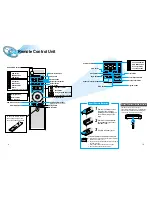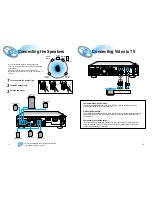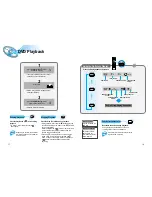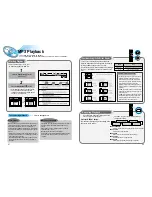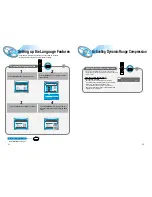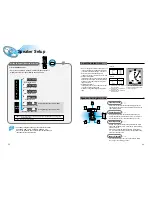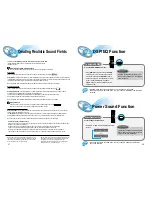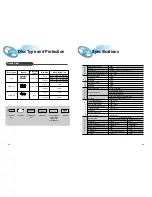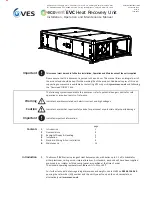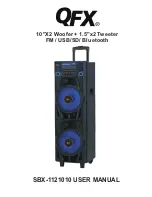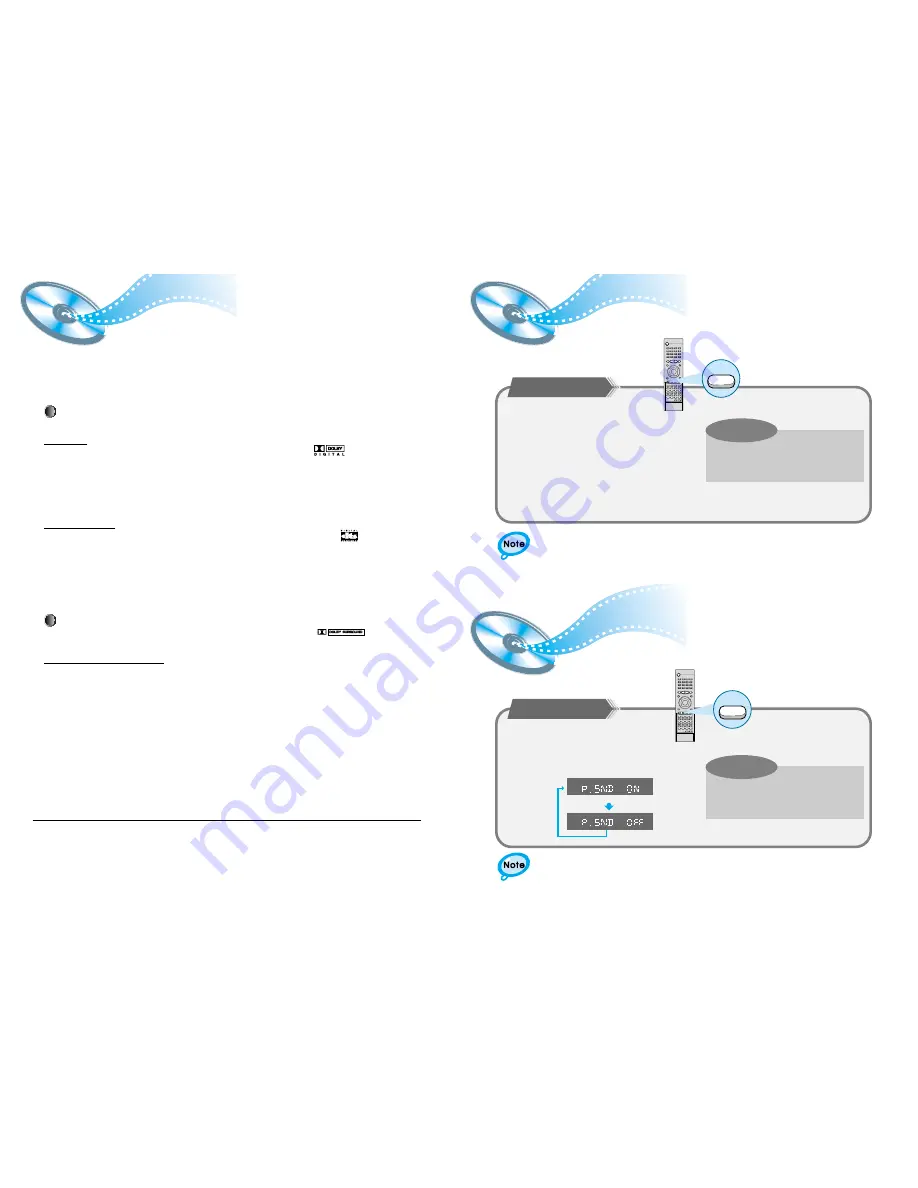
38
37
DSP/EQ Function
To Select a DSP/EQ
•
Press DSP/EQ on the front panel or DSP/EQ
on the remote control until the required option
is selected. Each time the DSP/EQ button is
pressed in sequence, the equalizer and sound
modes
“PASS, POP, ROCK, CLASSIC,
CINEMA, HALL, LIVE CLUB, DISCO”
are
selected in order.
DSP/EQ
Press the DSP/EQ Mode button.
What is a DSP/EQ?
DSP/EQ synthetically recreates the
sound field to achieve a more realistic,
powerful sound.
Power Sound Function
•
P. SND ON, P. SND OFF
are displayed for a few
seconds.
Power Sound
Press the Power Sound button.
What is a Power Sound?
This system is equipped with the Power
Sound feature, which makes the sound
more powerful and full-bodied.
•
DSP/EQ mode cannot be selected when a microphone is connected.
•
When playing a DVD encoded in two or more channels, DSP/EQ mode cannot be
selected.
•
When playing a DVD encoded in two or more channels, Power Sound function
cannot be selected.
Power Sound Function
Creating Realistic Sound Fields
You can use the following surround to reproduce a realistic sound field.
• Digital Multichannel Surround —Dolby Digital and DTS Digital Surround
• Dolby Pro Logic
Dolby Digital and DTS Digital Surround
To enjoy surround effectively, all the speakers need to be connected and activated.
Dolby Digital
Used to reproduce multichannel sound tracks of software encoded with Dolby Digital ( ).
Dolby Digital encoding method (discrete 5.1 channel digital audio format)records and digitally compresses the audio channels.
In addition,Dolby Digital enables stereo rear sounds,and sets the cutoff frequency of the rear treble at 20 kHz,compared to 7 kHz
for Dolby Pro Logic.These facts result in better sound quality than Dolby Pro Logic.
When the system detects Dolby Digital signals,the DOLBY DIGITAL indicator lights up on the display.
DTS Digital Surround
Used to reproduce multichannel sound tracks of software encoded with DTS Digital Surround ( ).
DTS Digital Surround is another discrete 5.1 channel digital audio format available on CD,LD,and DVD software.
Compared to Dolby Digital,audio compression rate is relatively low.
This fact allows the DTS Digital Surround format to add breadth and depth to the reproduced sound.
As a result, DTS Digital Surround features natural,solid and clear sound.
When the system detects DTS Digital Surround signals, the DTS indicator lights up on the display.
Dolby Surround
Used to reproduce sound tracks of the VCR tapes encoded with Dolby Surround ( ).
This is only used for the sound sources coming through the AUX IN jacks.
Dolby Pro Logic and Dolby 3 Stereo
Dolby Surround encoding format records the left front channel, right front channel,center channel,and rear channel
signals (total 4 channels)into 2 channels.
The Dolby Pro Logic decoder built in this system decodes these 2 channel signals into original 4 channel signals —
matrix-based multichannel reproduction,and allows you to enjoy a realistic stereo sound in your listening room.
When one of Dolby Surround modes is selected,the PRO LOGIC indicator lights up on the display.
* Sources recorded in Dolby Surround
These are sources in which three or more channels of surround have been recorded as two channels of signals using
Dolby Surround encoding technology.
Dolby Surround is used for the sound tracks of movies recorded on DVDs, LDs and video cassettes,
as well as for the stereo broadcast signals of FM radio, TV, satellite broadcasts and cable TV.
Decoding these signals with Dolby Pro Logic makes it possible to achieve multi-channel surround playback.
The signals can also be played on ordinary stereo equipment, in which case they provide normal stereo sound.
Manufactured under license from Dolby Laboratories. “Dolby,”
“Pro Logic,” and the double-D symbol are trademarks of Dolby
Laboratories. Confidential Unpublished Works. ©1992–1997
Dolby Laboratories, Inc. All rights reserved.
Manufactured under license from Digital Theater Systems, Inc.
US Pat. No. 5,451,942 and other world-wide patents issued
and pending. “DTS” and “DTS Digital Surround” are
trademarks of Digital Theater Systems, Inc. ©1996 Digital
Theater Systems, Inc. All rights reserved.

